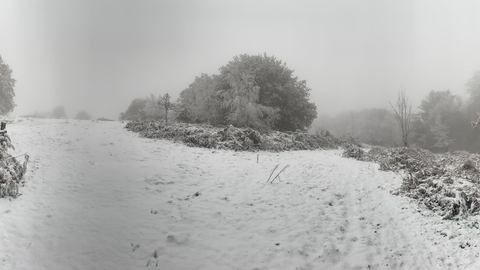
Lilac Bonnet (Mycena pura). Credit - Andy Nielson/LRWT



Orchid in bloom at Ulverscroft Nature Reserve. Andy Neilson
Location
Know before you go
Dogs
When to visit
Opening times
Always openBest time to visit
SpringAbout the reserve
|
The Ulverscroft reserve covers the whole range of habitats from hilltop (250 m) to valley bottom, and everything in between. Woodlands, heathland, grassland, meadow, wet woodland, ponds and marshes make this a truly diverse place to enjoy a stroll. The mature planted oak and beech woods are rich in bird life with treecreeper, nuthatch, green and great spotted woodpeckers and tits and even breeding sparrowhawks. There are patches of wood-sorrel, wood anemone and greater stitchwort in the ground layer, and wide variety of fungi appear in autumn. There is a spectacular display of bluebells each May in Poultney Wood. Greater stitchwort, wood-sorrel, yellow pimpernel and yellow archangel grow along the edges of the rides. At the western end of Fox Covert, small areas of sphagnum bog occur. The 'heathland' is dominated by bracken, although extensive patches of bilberry remain around the rocky hilltops, which are great for bees. Patches of heather are developing along the paths. Tree pipits use the isolated trees as song posts and woodcock used to be seen roding at dusk here in the late spring. The area is great for insects like butterflies, such as the large and small skippers, common blue, small copper and meadow brown. The valley marshes are rich in marsh plants and the stream's sides are clothed in opposite-leaved golden-saxifrage and marsh-marigold. Flowering plants in Herbert's meadows include fragrant orchid, quaking grass, devil's-bit scabious, bitter-vetch, meadow vetchling, heath spotted-orchid and tormentil. Parts of the meadow are very wet with sedge communities, great bird's-foot-trefoil and marsh thistle in profusion. The southern part of the reserve was left to the National Trust by the late Charles Cliffe Jones. |
Species
- Nuthatch
- Treecreeper
- Sparrowhawk
- Green woodpecker
- Great spotted woodpecker
- Tree pipit
- Woodcock
- Common fragrant-orchid
- Quaking-grass
- Marsh marigold
- wood anemone
- Wood sorrel
- Greater stitchwort
- Bluebell
- Yellow archangel
- Devil's-bit scabious
- Large skipper
- Small skipper
- Common blue
- Small copper
- Meadow brown
- Fly agaric
- Green elf cup


